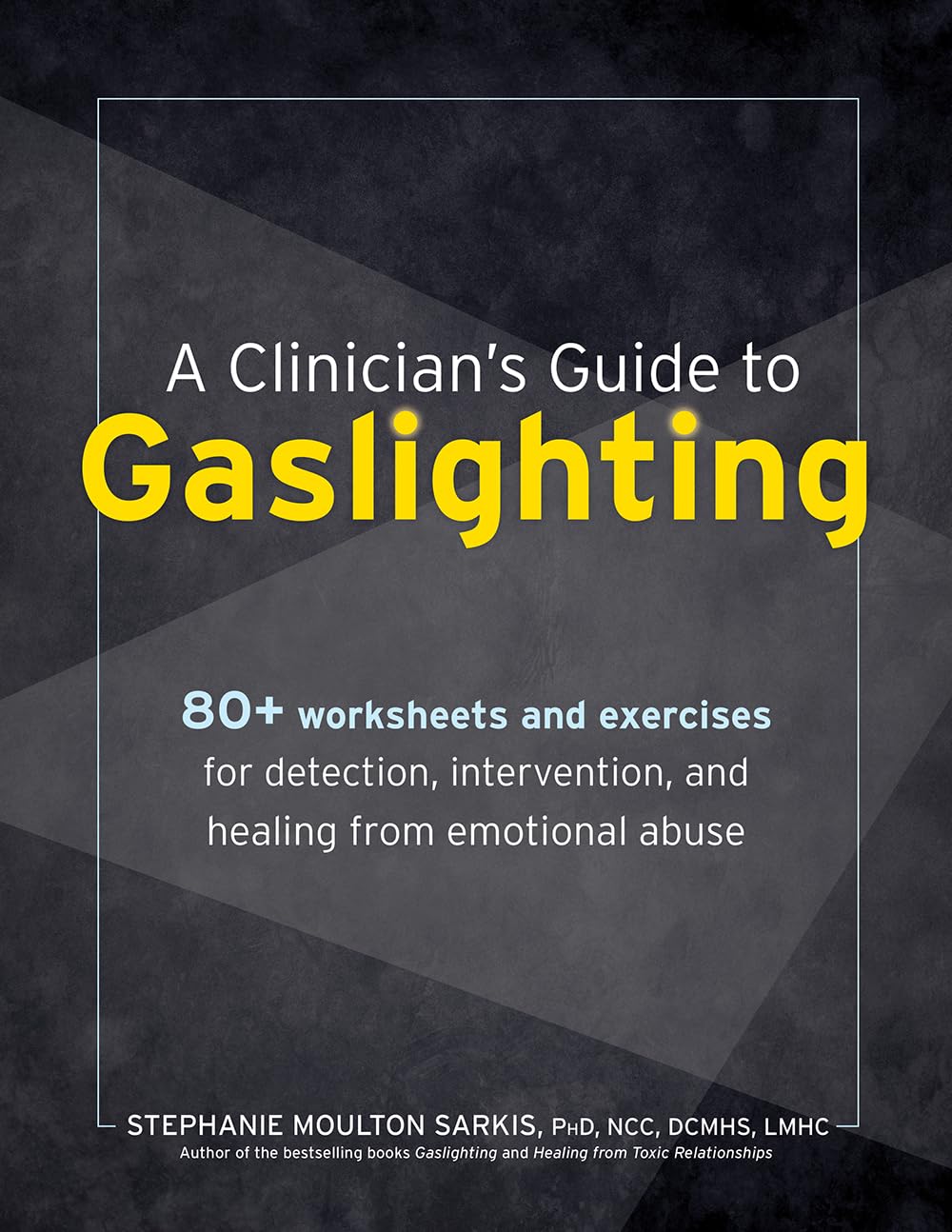Understanding Gaslighting:
Manipulation, Control, Healing
The term "gaslighting" originated from the 1938 British play "Gas Light" by Patrick Hamilton, later adapted into films in 1940 and most notably the 1944 adaptation starring Ingrid Bergman. "Gaslighting isn't explicitly mentioned in the screenplay or films, rather, it refers to the husband's tactic of dimming and brightening gas-powered lights, to make his wife doubt her sanity. Fast forward to today, the term 'gaslighting' has come to represent an insidious form of mental manipulation often seen in personal relationships, workplace dynamics, and political discourse.
Gaslighting, at its core, is a form of emotional manipulation where a person or group makes someone question their sanity, perception of reality, or memories. It's mental warfare that erodes one's trust in their understanding of reality.
So why do people gaslight? The motivations behind gaslighting are as varied as the individuals involved. Some may gaslight to maintain control in a relationship, some for personal gain, others to avoid accountability, and some just because they can. The unifying factor is the inherent power play involved, with the gaslighter seeking to dominate and disorient the victim for their own advantage.
Recognizing gaslighting isn't always easy, as it's a steady erosion of confidence rather than a conspicuous blow. Some signs include feeling constantly confused, doubting your memory or reality, frequently apologizing, feeling isolated, and feeling as though you're overreacting or too sensitive.
Consider an example: a partner may persistently deny an event you recall distinctly, such as a promise they made or an argument you had. They may insist that your memory is faulty, leading you to question your perception of reality. This is a classic illustration of gaslighting.
Gaslighting is a systematic process undertaken to dominate and control another person's worldview. By causing a person to question their reality, memories, and perceptions, gaslighters can exert a high level of control and advance their own agenda unfettered.
The term 'gaslighting' has come to represent an insidious form of mental manipulation often seen in personal relationships, workplace dynamics, and political discourse.
Knowing what to look for is key in identifying a gaslighter. They tend to be highly manipulative, denying their actions when confronted, twisting the truth, and portraying themselves as the victim. They often belittle or dismiss the feelings and perceptions of others, making their victims question their own experiences and realities.
Leaving a gaslighter takes courage, strength, and often, professional help. It's essential to validate your experiences, seek support from trusted individuals, disengage from the gaslighter, and, in many cases, involve a professional counselor or therapist to cope with the aftermath of emotional abuse.
Gaslighting can have a profound impact on mental health. Over time, it can lead to severe anxiety, depression, traumatic stress, low self-esteem, and even suicidal ideation. It's a form of psychological abuse that can leave victims feeling battered, drained, and doubting their sanity.
Road to recovery from gaslighting in relationships often involves breaking contact with the gaslighter, seeking professional help like therapy, rebuilding self-trust, leaning on supportive relationships, devising a mental health plan and engaging in self-care practices.
Gaslighting can also be found in the workplace, where it often occurs subtly and insidiously. It might involve bosses or colleagues dismissing your ideas, opportunities, and efforts, blaming you for their mistakes, or creating a narrative that questions your competence and professional capabilities.
In the political realm, gaslighting takes the form of leaders manipulating facts and spinning narratives to suit their agenda, causing the public to question the veracity of their own knowledge, perceptions, and beliefs about sociopolitical issues.
In essence, gaslighting is a nefarious form of emotional manipulation, aiming to control others by causing them to question their reality. It's a subtle and complex form of psychological abuse, often leaving deep emotional scars and distorted perceptions in its wake. Being aware of it, while painful, is the first step towards recovery, and prevention.
Gaslighters exploit trust and emotional ties to their advantage, using these relationships as platforms to manipulate and control. They thrive in environments where their tactics go unchecked, such as in dysfunctional relationships or power imbalances.
Gaslighting isn't just limited to personal or professional relationships. It occurs in various contexts, from family dynamics and friendships to societal and political arenas. Known for its insidious nature, it is a form of abuse that can go unnoticed until the damage has been done.
Victims of gaslighting often feel isolated and disoriented. Gaslighters create environments where the victim is cut off from support and validation, making the process of regaining some sense of reality even more challenging.
Gaslighting isn't a conflict - it's a war, with the gaslighter attacking the victim's perceptions of reality to achieve dominance. The underlying motive is not to win a disagreement but to gain control and superiority at the expense of the victim's mental well-being.
The gaslighter's strategy involves denying their actions, deflecting blame, and distorting the truth. This manipulation tactic is used to confuse and control the victim, keeping them in a constant state of anxiety and uncertainty.
At its core, gaslighting is a denial of reality. By persistently denying or distorting facts, gaslighters cause their victims to question their understanding of events or situations, leading to confusion and self-doubt.
Gaslighting undermines the victim's identity and self-worth by persistently challenging their perceptions and experiences. The aim is to create so much self-doubt that the person no longer trusts their own judgments and instead becomes reliant on the gaslighter for reality interpretation.
Gaslighting induces a deep sense of fear and powerlessness in victims. As they grapple with disoriented reality, victims often suppress their feelings, submit to the gaslighter's narrative, and may even begin to see the gaslighter as their only source of truth.
Operating under the constant state of fear, confusion, and self-doubt can result in severe mental health effects. The prolonged exposure to gaslighting can induce stress disorders, chronic anxiety, depression, and even post-traumatic stress disorder (PTSD).
Gaslighting is a common feature in toxic relationships. Gaslighters use this tactic to assert power and control, manipulating their victim's reality to advance their agenda or avoid accountability.
Workplace dynamics often offer fertile ground for gaslighting, where power imbalances and competitive environments create opportunities for manipulation and control. Recognizing and addressing gaslighting in the workplace is key to promoting a healthy and productive work environment.
In politics, gaslighting is used to control public opinion and deflect criticism. By distorting truths, spreading misinformation, and dismissing opposing views, politicians manipulate public perception to consolidate their power and further their interests.
In the face of gaslighting, knowledge is power. Understanding the concept and recognizing the signs of gaslighting can go a long way in protecting ourselves and others from this form of emotional manipulation and psychological abuse.
In the end, it's critical to remember that everyone deserves respect, honesty, and truth in their relationships. If you perceive that you're a victim of gaslighting, seek help. Reach out to trusted friends or family, engage professionals, call hotlines, and utilize resources available to you. Remember: you are not alone and you can reclaim your reality.
Essential Reading
Help survivors break free from the cycle of manipulation and begin to heal.
Many clinicians have difficulty recognizing and treating victims of gaslighting—an intense and long-term form of psychological abuse—especially now that it’s become such a misunderstood and misused cultural term. As a result, clients often struggle to release themselves from the effects of toxic or manipulative relationships, instead being left to question their perceptions and sense of reality.
A Clinician’s Guide to Gaslighting will be your number one tool for supporting and empowering these clients. Written by gaslighting expert Stephanie Moulton Sarkis, this workbook provides you with the tools needed to identify, validate, and treat the lasting effects of gaslighting and other forms of emotional abuse. Inside, you’ll find resources, worksheets, handouts, and exercises to:
- Differentiate between gaslighting and poor communication in a relationship
- Determine the origins and causes of gaslighting and narcissistic abuse
- Explore family-of-origin issues that make clients more vulnerable to gaslighting
- Identify and respond to gaslighting and emotional abuse in organizations
- Guide clients in breaking free from the trauma bond
- Help clients rebuild healthy boundaries
- Create a safety plan for clients planning to leave an abusive relationship
- Help clients reconnect with trusted family and friends
- And more!
Gaslighting makes victims feel trapped, helpless, and powerless. As a clinician, your job is to recognize this manipulation and help clients regain control over their narrative. Let this book be your guide.
Want to read more great articles?
See following link to check out a fascinating collection of psychology articles by leading academics and researchers.
This Psychology Symbol - Vintage Retro Striped Sunset T-Shirt is available from Amazon (prime eligible) in a range of colors for women and men. Sales help support this website, which has been providing free and comprehensive information and resources for psychology students and educators since 2008.
Recent Articles
-
Unparalleled Psychology Advertising Opportunities
Jan 04, 26 06:19 AM
Promote your book, podcast, course, or brand on one of the web's leading psychology platforms. Discover advertising and sponsorship opportunities today. -
Psychology Articles by David Webb
Jan 04, 26 06:13 AM
Discover psychology articles by David Webb, featuring science-based insights into why we think, feel, and behave the way we do. -
The Placebo Effect: How Expectation Shapes Experience
Jan 04, 26 06:09 AM
What is the placebo effect? Explore how expectation shapes pain, healing, and experience, and what neuroscience reveals about belief and the brain.
Know someone who would love to read Understanding Gaslighting: Manipulation, Control, Healing? Share this page with them.
Please help support this website by visiting the All About Psychology Amazon Store to check out an awesome collection of psychology books, gifts and T-shirts.
Go From Understanding Gaslighting: Manipulation, Control, Healing Back To The Home Page








